Tibetan Food and Cuisine
- by Eric
- Last Updated: 2025-03-28
The gorgeous and unique Tibet is the place closest to paradise. In addition to its beautiful scenery, food can also not live up to it. When you come to Tibet, if you want to deeply feel the unique way of life in Tibet, you still need to taste the special Tibetan cuisine. This area is full of unknowns and irreplaceables that have made this cuisine unique.
Tibetan cuisine is the general term for Tibetan food, and it has a long history. The taste of Tibetan food is light and peaceful. Many dishes, except salt, garlic and shallots, do not put any spicy seasonings, so the original taste of the food is guaranteed. It's also in line with the current trend of returning to the basics of food culture. While maintaining the traditional dietary culture of the plateau, it is also influenced by Sichuan, Indian and Nepalese food culture. The commonly used cooking methods are roasting, frying, boiling, etc. Representatives include not only dishes made from yak meat and Tibetan pork, but also dishes made with curry and Sichuan pepper. Of course, the daily diet of Tibetans such as tsampa, butter tea, and highland barley wine cannot be lacking.
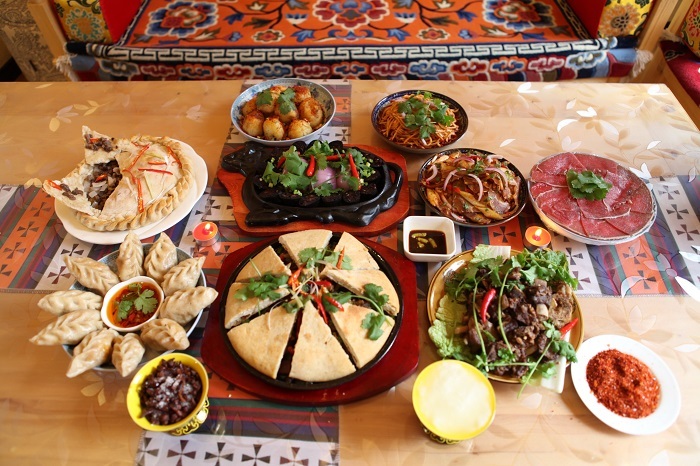
The Features of Tibetan Cuisines
Due to the unique ecological and cultural environment of the Qinghai-Tibet plateau, the derived Tibetan cuisine style is quite different from that of other ethnic groups, forming the following features:
1. At an average altitude of above 4000 meters, Tibet is located in the Qinghai-Tibet plateau, with thin air, abundant sunshine, and little rainfall. Due to these unique natural environments, Tibet has bred unique agricultural and sideline products, thus forming a nomadic food character. In the vast plateau region, butter tea, sweet tea, milk residue, barley wine, beef, mutton, and other foods of the plateau characteristic have become the traditional food of the Tibetan people.
2. Tibet is at the junction of China and many other countries therefore Tibetan food is greatly influenced by China and neighboring countries such as India and Nepal. Besides, Tibet is a holy land of Tibetan Buddhism so it's also been deeply influenced by Tibetan Buddhist culture. As an ethnic minority group in China, Tibetan people have their own dietary taboos. For example, many Tibetan people don’t eat fish because they think fish is one of the Eight Auspicious Symbols of Buddhism.
3. Traditional Tibetan cooking methods are mainly boiled and fried, supplemented with certain mixed, steamed, and raw foods, and there are fewer stir-fried dishes. This is mainly due to the high altitude of Tibet, which makes it difficult to stir-fry dishes. The raw materials of traditional Tibetan cuisine are mainly Tibetan barley, beef and mutton, its offal, ghee, milk residue, etc. You can hardly find seasonal vegetables in Tibetan recipes. But in recent years, with the promotion of vegetable cultivation and consumption on the plateau, vegetables have appeared on the dining tables in Tibet, and stir-fried food has become more and more popular.
4. There is a big difference in diet between the agricultural and pastoral areas of Tibet, as well as the dietary customs. In pastoral areas, meat is the staple food, and only a small amount of Zanba is the supplement; but in agricultural areas, conditions are just the opposite. Herdsmen in northern Tibet don't like to put curry powder in their dishes, but almost all other ethnic groups living near the border will put curry. Another example is oatmeal. Although most people like it, eating ways are different. Monba people like to add milk residue inside.
5. The highest level of Tibetan cuisine is mainly concentrated in Lhasa and Shigatse, which are the centers of Tibetan cuisine culture. As the old nobles, manor owners, government offices, Dalai Lama and Panchen Lama used to live there. Although Tibetan cuisine in many other places is also very distinctive, it‘s far from comparable to these two places in terms of the complete variety, craftsmanship, and superb cooking techniques. In particular, the Tibetan cuisine in Lhasa has become representative of Tibetan cuisine as Lhasa food brings together the essence of Tibetan cuisine but is more vibrant and diverse. You can taste a lot of authentic food at the Lhasa restaurants near Jokhang Temple and around Barkhor Street. Of course, you can also have Western food, Sichuan food, Nepalese food, or Indian food here.
Classic Tibetan Food
Here are the top 10 Tibetan foods that you can’t miss when you visit Tibet.
Tsampa(Zanba)
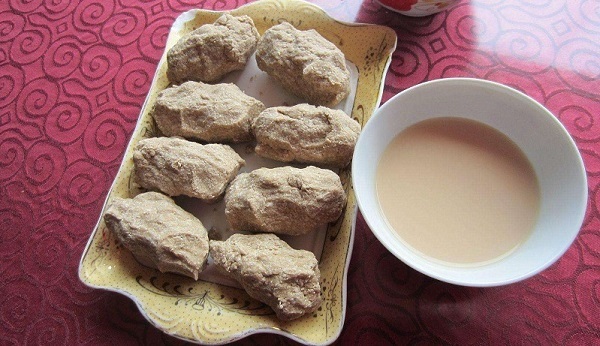
The main ingredient of Tsampa is barley flour. When eating, add a small amount of butter tea, milk dregs, and sugar into the barley flour and mix them evenly, then knead it into a ball by hand. It is convenient to eat, carry and deposit. And it has rich nutrition and a high quantity of heat. It is also the best food to satisfy hunger and keep out the cold. Therefore, Tsampa has become one of the traditional staple foods in Tibet. Most Tibetans will eat Tsampa three times a day.
When Tibetan people celebrate Tibetan New Year, each family should place “Zhusuo Maqi”(a wooden container) on Tibetan-type ark, then fill it with Tsampa, ginseng fruit, and other food. When Neighbors, relatives, and friends visit, the host will serve up the "Zhusuo Maqi". The guests, with his hand, grab a bit of Tsampa and throw it into the air three times, and then grab a bit into their mouths, and then said: "Tashi Delek" (good luck).
>>See more about Tibetan Tsampa
Butter Tea
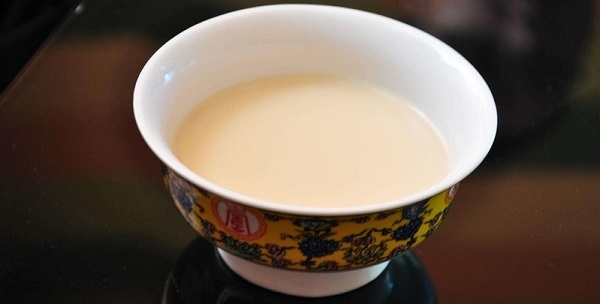
Butter tea is the favorite drink of Tibetans. A legend is that Princess Wencheng was not used to the diet of the plateau upon her arrival to Tibet, so she figured out a way to drink half a cup of milk and then half a cup of tea when eating so that it will feel more comfortable. Since then, the tea-drinking style has prevailed in Tibet. Later, butter tea invented by Princess Wencheng based on this became a new way of drinking tea.
Butter tea is the Tibetan daily essential drink and also a necessity of lives on the Tibetan plateau. High in calories, it tastes pure and sweet. This special tea is good for health, especially it's effective in treating altitude sickness, preventing lips from breaking due to dry weather, and also keeping out the cold. There are certain rules for Tibetans to drink butter tea, which is generally added while drinking, rather than being dried up in one mouth.
Sweet Tea
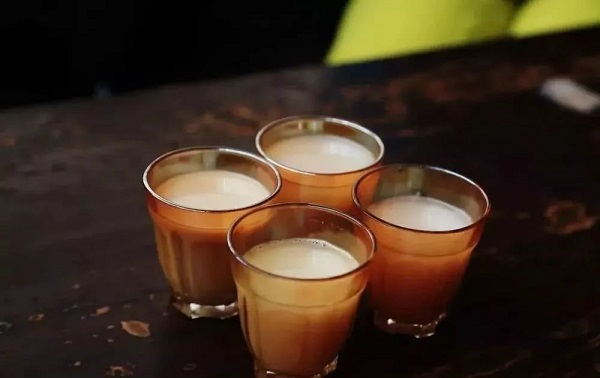
Most people who travel to Tibet are not used to drinking butter tea, but they like to drink sweet tea, especially the sweet tea from Lhasa, which is very famous in Tibet. Lhasa sweet tea is made of boiled black tea juice, milk or milk powder, and white sugar, etc. It is sweet and delicious, rich in nutrition, and loved by people. Tibetan sweet tea houses are mainly concentrated in Lhasa and Shigatse, of which Lhasa has the most. If you look around the sweet tea houses on Barkhor Street, you will find that Tibetans like to spend time with friends in the sweet tea houses.
Yak Meat
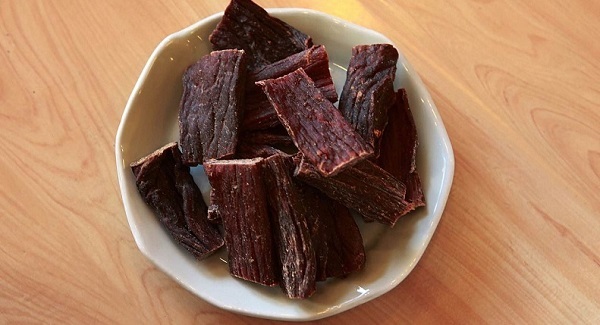
Yak meat is a common food in Tibetan areas. There is yak jerky, marinated yak meat, and a variety of dishes made with fresh yak meat. Tibetan yak meat is selected from the yaks produced on the Tibetan Plateau, with an altitude of more than 3,800 meters. It has the characteristics of high protein, low fat, high calories, and rich in various amino acids. It has significant effects on disease resistance, cell activity, and organ function. And, its nutrition value is ten times that of common beef.
Tibetan Noodle
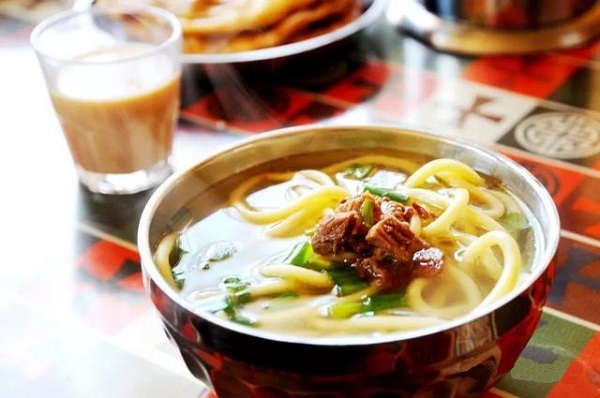 Tibetan noodles are a typical Tibetan breakfast and a traditional Tibetan snack. It's one of Tibetans' favorite foods. Tibetan noodles are made of wheat flour, which tastes a bit raw. In fact, this is one of the characteristics of Tibetan noodles. The essence of Tibetan noodles lies in its soup as the noodles are generally cooked with yak meat soup, which makes it particularly fragrant. When having it, people usually serve a few spoonfuls of Tibetan chili sauce.
Tibetan noodles are a typical Tibetan breakfast and a traditional Tibetan snack. It's one of Tibetans' favorite foods. Tibetan noodles are made of wheat flour, which tastes a bit raw. In fact, this is one of the characteristics of Tibetan noodles. The essence of Tibetan noodles lies in its soup as the noodles are generally cooked with yak meat soup, which makes it particularly fragrant. When having it, people usually serve a few spoonfuls of Tibetan chili sauce.
After many pilgrims make a pilgrimage around Jokhang Temple, they will eat a bowl of Tibetan noodles and drink a cup of sweet tea in the tea house around Barkhor Street. If you visit Lhasa, you may have a bowl of Tibetan noodles and enjoy the unique flavor.
Tibetan Yogurt
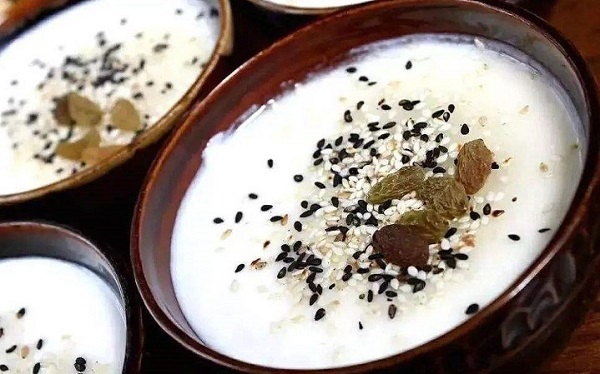 In Tibetan, yogurt is called "snow", and one of the biggest Tibetan festivals - the Shoton Festival is named after yogurt. During this period, people on the streets and alleys will eat a cup of local yogurt. Except for festivals, yogurt is also one of the Tibetans' favorite foods.
In Tibetan, yogurt is called "snow", and one of the biggest Tibetan festivals - the Shoton Festival is named after yogurt. During this period, people on the streets and alleys will eat a cup of local yogurt. Except for festivals, yogurt is also one of the Tibetans' favorite foods.
Tibetan yogurt also has strong local characteristics, which is different from yogurt in other places. Tibetan yogurt uses fresh yak milk. This kind of yogurt is milky white and mushy, which tastes sour, pure, thick and full of milk flavor in the mouth. If it is the first time to taste, many travelers may never forget the special taste, but after getting used to it, this special taste will become more and more refreshing over time. When having Tibetan yogurt, you can add some sugar depending on your personal taste. If you sprinkle some sesame seeds and preserved fruits, it will be perfect. This kind of yogurt can be bought at small stalls and specialty yogurt shops in Tibet.
Highland Barley Wine
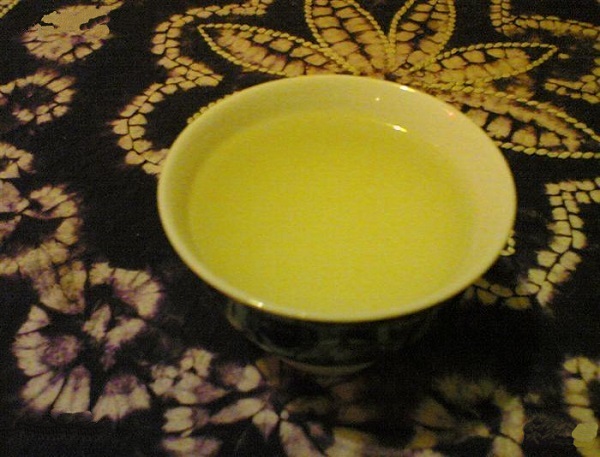
Highland barley wine, called “qiang” in Tibetan, is made from highland barley - the main grain produced on the Qinghai-Tibet plateau. It is the favorite wine of Tibetan people for celebrating festivals, getting married, having children, and greeting friends and relatives.
The highland barley wine is fragrant and mellow, sweet, and clear. Besides, the winter in Tibet is severely cold and long. This highland barley wine is also a warm-keeping beverage. The first barley wine had no complicated process. In Tibetan areas, almost every family can make it. Later, the brewing technology of barley wine was gradually improved. Over the past 1,300 years, the Tibetan wine culture, with barley wine as the carrier, is well known at home and abroad for its unique charm.
Tibetan Momo
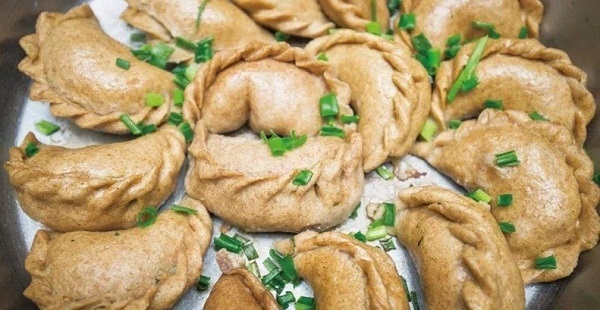
Tibetan Momo is popular among Tibetans. The momo is similar to the traditional Chinese dumpling but not wholly the same. It is the Tibetan type bun with some form of filling. Most of the time, Tibetans use yak meat as the filling. Of course, if you are a vegetarian, there are also momo with cabbage, potatoes, mushrooms, and other vegetables as filling. There are many ways of making momo. However, the most commonly used methods are steaming and frying. Sometimes, the momo is also used to make soup. Usually, Tibetan people like to eat momos with a special sauce.
Sheep Blood Sausage
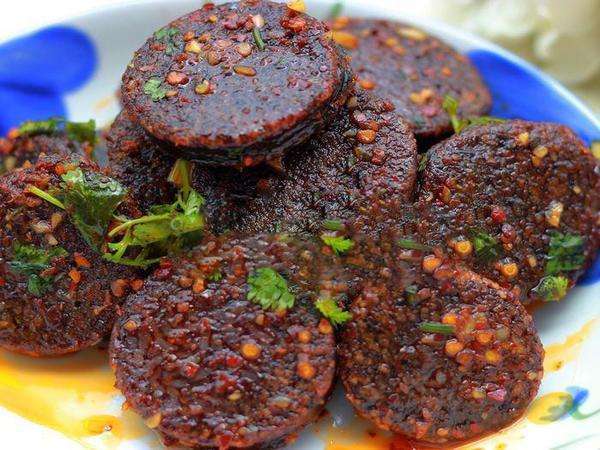 With a long history, sheep blood sausage is a specialty food in Lhasa, Tibet. Tibetan blood sausage is actually one of the well-known sausages, but the difference is that it is not only filled with fresh meat but also contains animal blood, hence it's named blood sausage. For farmers and herders in Tibetan areas, sheep blood is not cooked separately after sheep is slaughtered, but is poured into the small intestine and cooked. It has the characteristics of non-breaking, non-slagging and non-peeling, and the taste is delicate and soft, not greasy or woody.
With a long history, sheep blood sausage is a specialty food in Lhasa, Tibet. Tibetan blood sausage is actually one of the well-known sausages, but the difference is that it is not only filled with fresh meat but also contains animal blood, hence it's named blood sausage. For farmers and herders in Tibetan areas, sheep blood is not cooked separately after sheep is slaughtered, but is poured into the small intestine and cooked. It has the characteristics of non-breaking, non-slagging and non-peeling, and the taste is delicate and soft, not greasy or woody.
Air Dried Meat
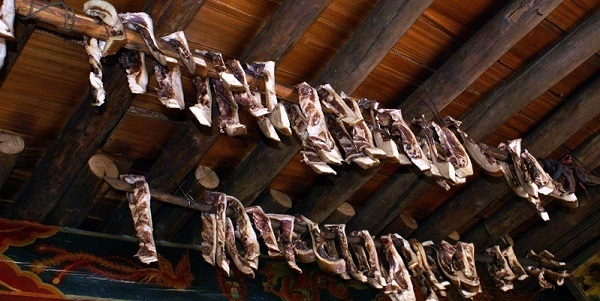
The birth of this delicacy is related to the migration habits of nomads. In the process of migration, the nomads learned to take local materials and make air-dried beef and mutton as it's easy to carry and store. It's a popular food among Tibetans.
It is usually made each winter, often at the end of November. At this time, the temperature is below zero. Tibetans cut the beef and mutton into small pieces and string them up, then hang them with bamboo cages in the shade under the tents or eaves to freeze and air dry. After the second year in March, they will be taken down to be roasted or eaten raw, which are very delicious. Due to the unique climatic characteristics of Tibet, Tibetan air-dried meat is crispy and has its unique taste.
Related Articles
- Travel to Tibet
- Tibetan Yaks
- China Tibet Vacations
- Tibetan Monk Food and Diet
- Tibetan Shoton Festival
- Tibetan Art
- Tibetan Tsampa(Zanba)
- Tibetan Butter Tea - Po cha
- China Tibet Tours
- Lhasa Yak Hotel
Email response within 0.5~24 hours.


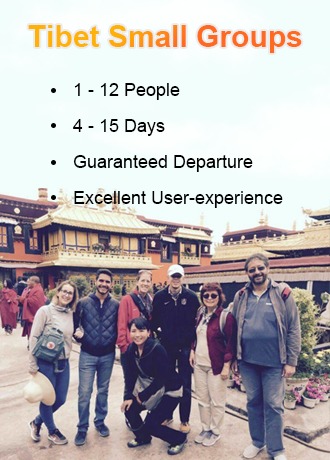

Typically Asked Questions from Our Clients
Asked by Tan ***
I am looking into tibet train tour. First timers for all of us, and one is a Muslim.
I am concerned on halal food along the way for her. Please advise on a better itinerary.
We can arrange the Tibet Train Tour for you. Tourists usually take trains from Chengdu, Beijing, Shanghai, or Xining to Lhasa. We can help you book the soft-sleeper train tickets.
On the train, usually, there's halal food to sell. I suggest you take some food in advance because there's sometimes no halal food. In Tibet, our guide will recommend some halal restaurants for you according to your requirements.
6-day Lhasa Gyantse Shigatse Tour are my suggested itineraries according to your schedule & preference.
Asked by Lesl***
My husband and I are planning to travel to Tibet. We’d like to go see Namsto lake and just explore Lhasa. It would be great if we could have a day focus on food (making local food experience). My husband would need a permit. We plan to be in Tibet for 6 days including the travel days (in and out of lhasa)
Dear Lesl****,
Thank you for sending us an inquiry!
We can arrange a private tour for you starting from 23 Oct. Since you would like to have a day focusing on local food experiences, this is the itinerary for you.
Please let me know without hesitation if you have any further questions or doubts. It is my pleasure to work with you at any time.